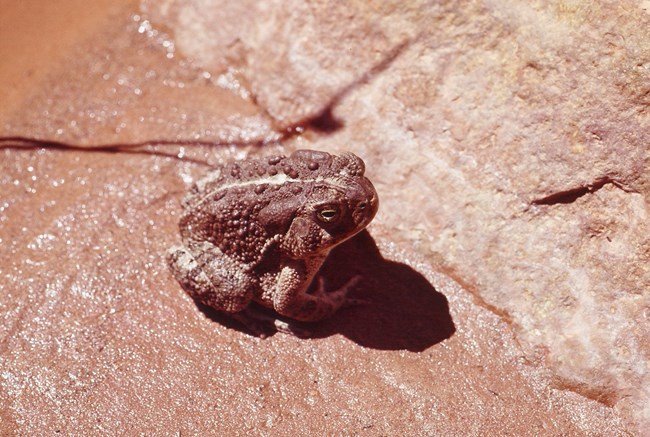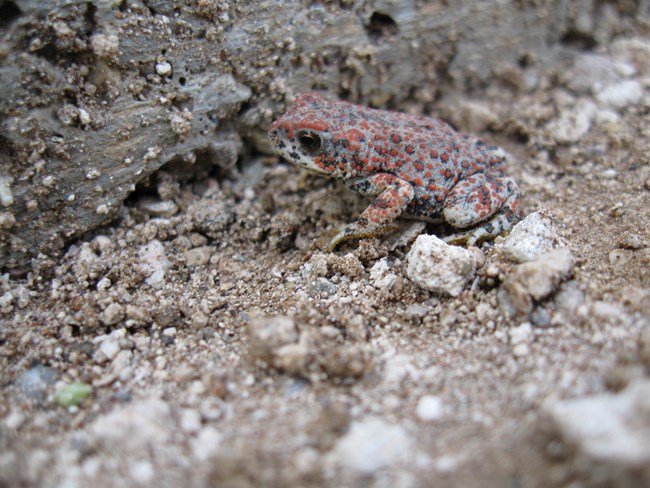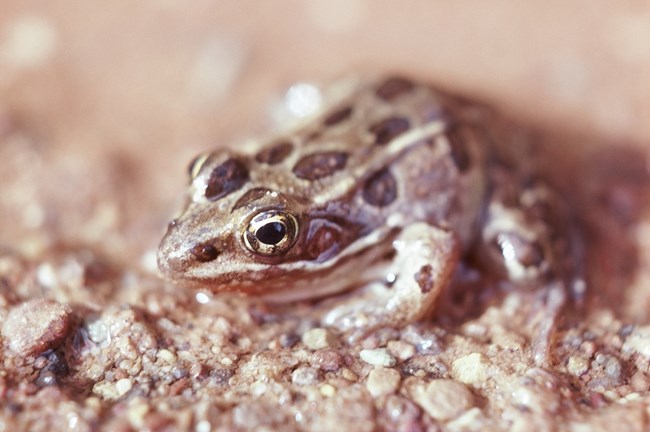|
Amphibians are cold-blooded animals that typically experience an aquatic gill-breathing stage followed by a terrestrial lung-breathing stage. Amphibians include frogs, toads, salamanders, and newts. Capitol Reef is home to five species of amphibians, all of which are either frogs or toads. These animals rely on often sparse desert water and may be seen in or near streams, rivers, springs, and ephemeral pools, also known as tanks or waterpockets. A complete Wildlife Checklist is available for download. 
NPS Great Basin Spadefoot ToadGreat Basin spadefoot toads (Spea intermontana) have been reported in the South District near Halls Creek, in various tanks in the Waterpocket Fold, and the Fruita area. They have vertical pupils and enter permanent and semi-permanent water in response to rain. During dry weather, they burrow into the ground. 
NPS Woodhouse's ToadWoodhouse's toads (Bufo woodhousii) are found in Fruita, Halls Creek, and tanks in the Waterpocket Fold. They have a white dorsal stripe with prominent cranial crests. This toad is widespread throughout the United States, frequenting a variety of habitats including desert streams, sagebrush flats, woods, floodplains, and even city backyards. 
NPS / K. Gonzales Red-Spotted ToadRed-spotted toads (Bufo punctatus) are found in Fruita and the South District of the park. These small nocturnal toads are dotted with numerous red or orange warts. While sometimes seen along river floodplains, these toads are more often seen on or among rocks where they shelter in crevices. 
NPS Canyon TreefrogCanyon treefrogs (Hyla arenicolor) favor quiet pools that have hard rocky bottoms and are therefore found in tanks throughout the Waterpocket Fold and at the park's south boundary in Halls Creek. This small, well-camouflaged frog has prominent toe pads and ranges from blotched or spotted to having little or no pattern, especially in southwest Utah. 
NPS Northern Leopard FrogAs a "true frog" the northern leopard frog (Rana pipiens) relies on permanent water sources and is possibly found along the Fremont River. These frogs may be green or brown with round dark spots with pale borders. |
Last updated: May 7, 2024
